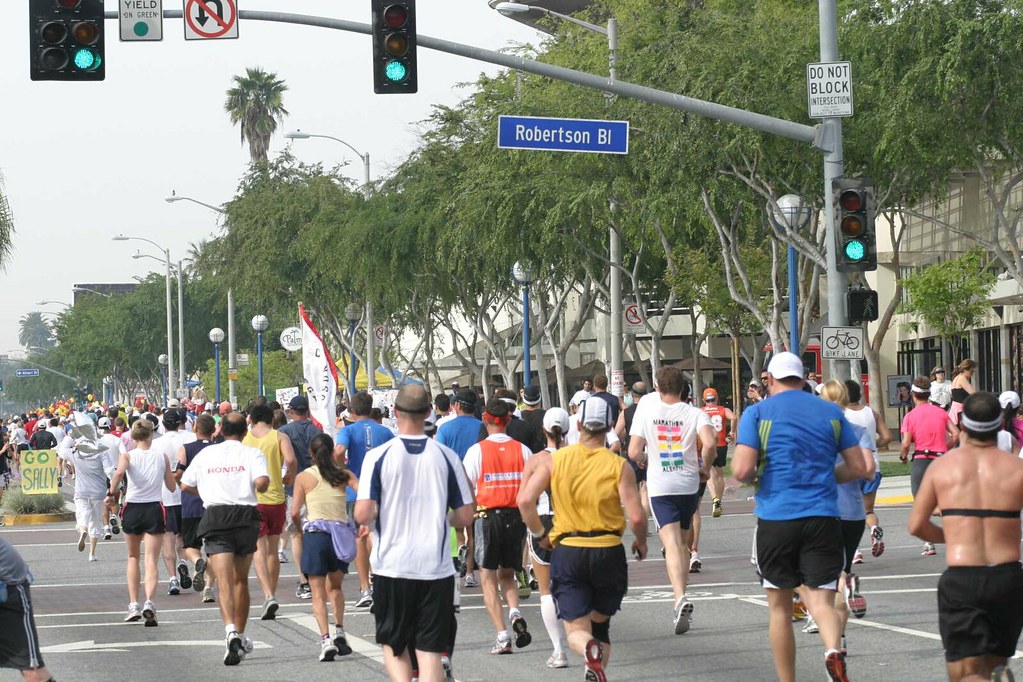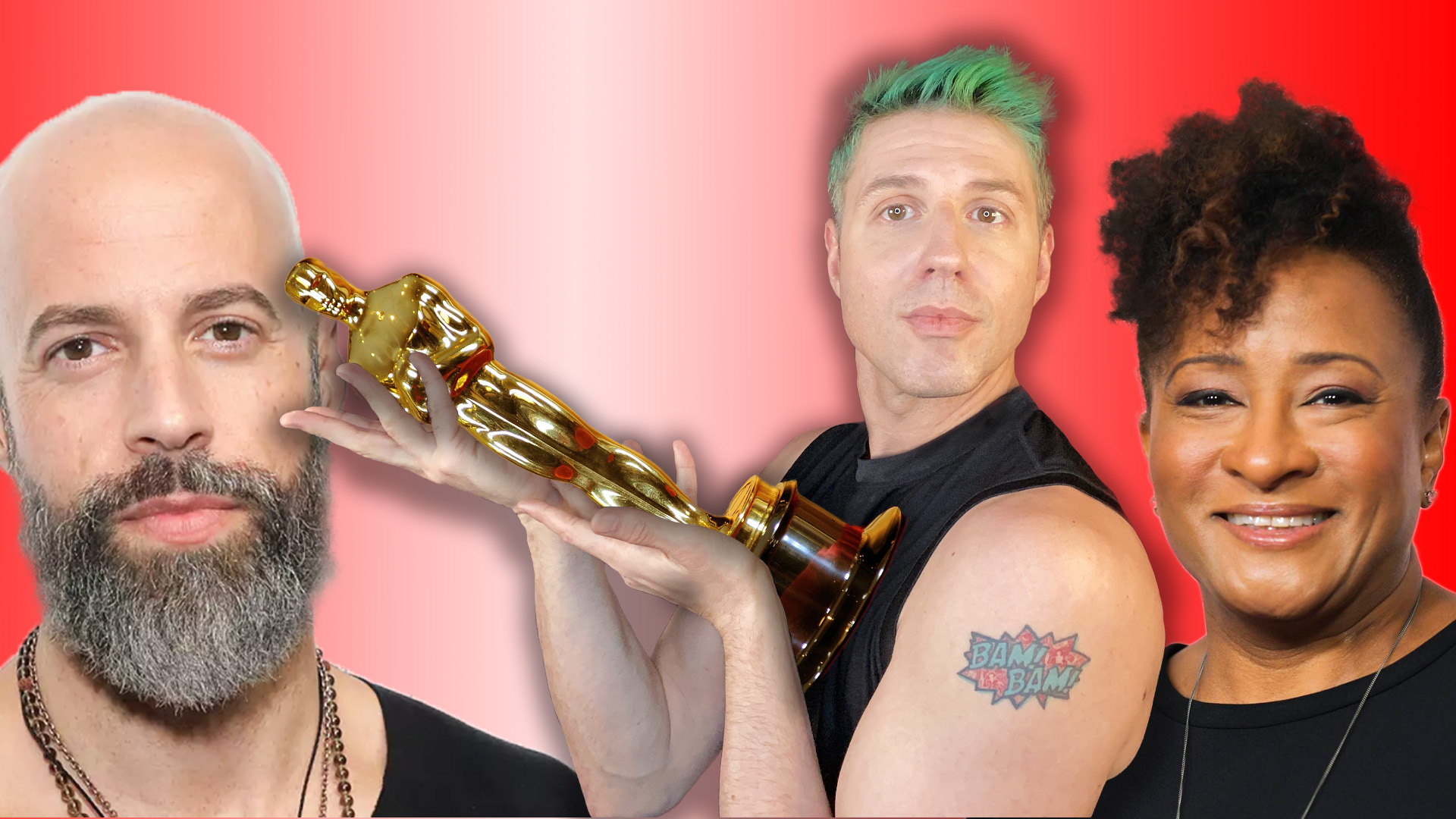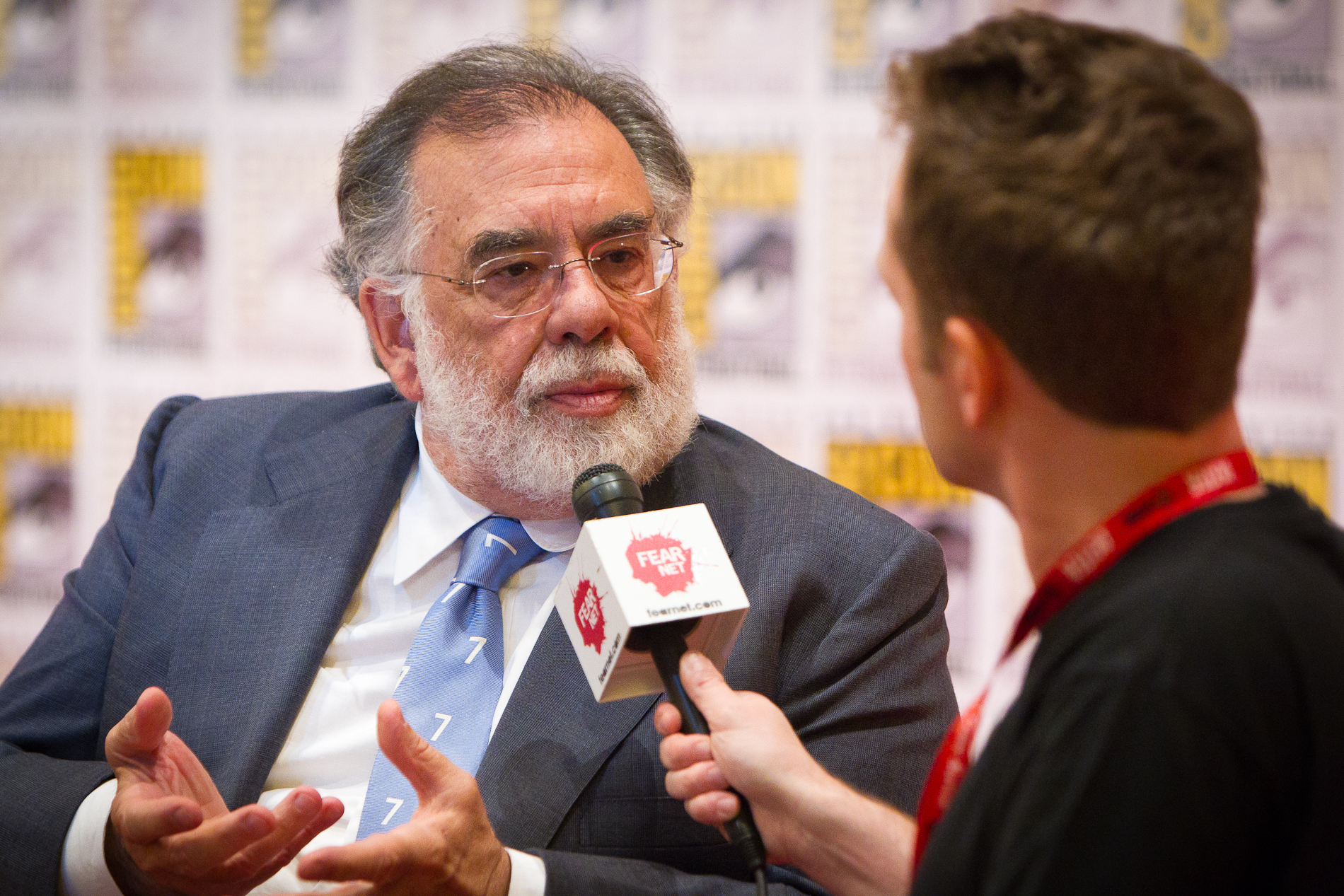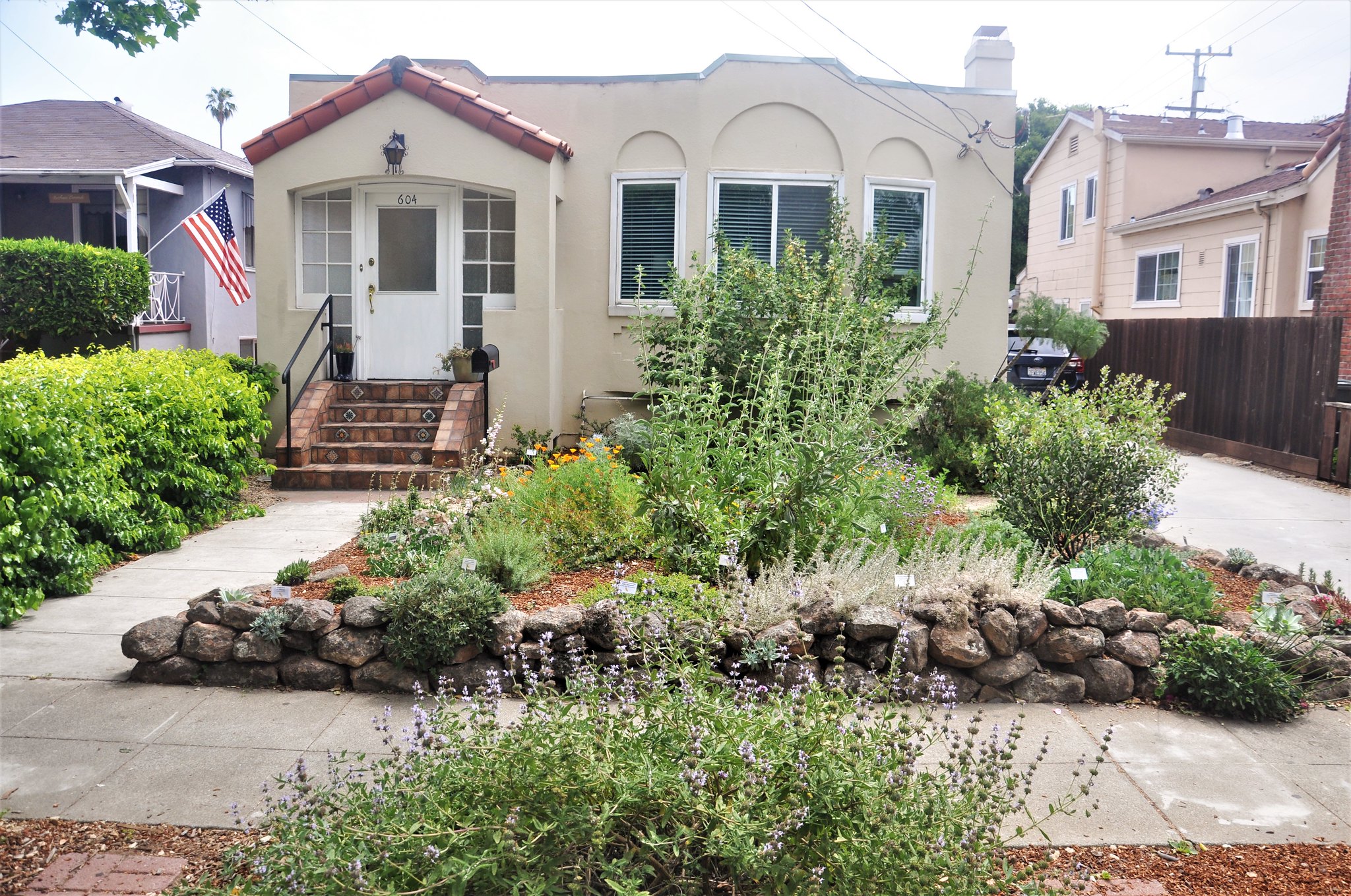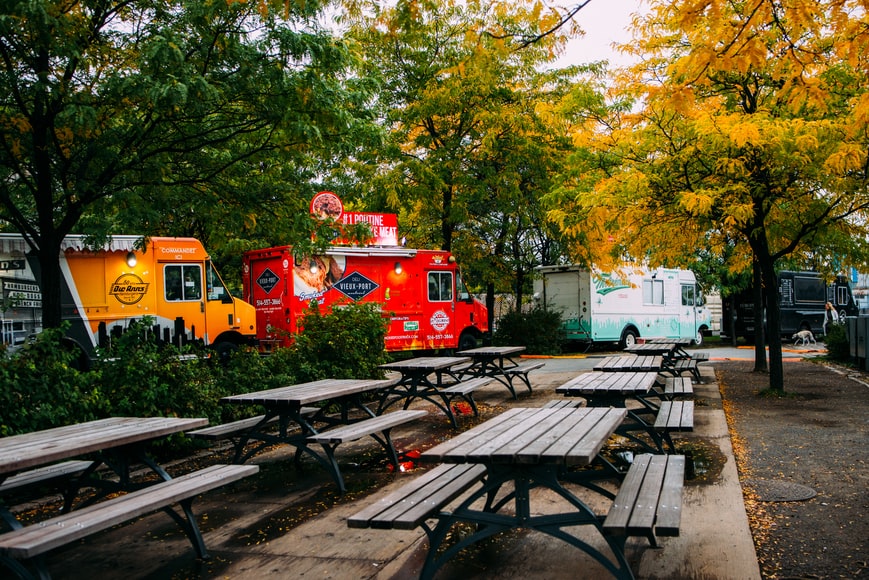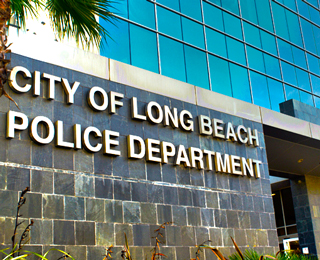Kenyans John Korir and Delvine Meringor won the 37th edition of the Los Angeles Marathon Sunday, with Meringor winning an added $10,000 bonus for beating Korir to the finish line.
The women’s elite field started approximately 18 minutes before the men’s, based on the expected men’s and women’s winning times, which organizers correctly predicted would put the top female and male runners within seconds of each other heading into the final mile.
The race held the gender challenge from 2004 to 2014, with women winning seven times and men four. It was discontinued in 2015 when the race served as the USA Marathon Championships.
“I didn’t know I was going to win (the bonus),” Meringor said. “I could see he was almost closing on me. Then, he didn’t close on me again.”
Toni Reavis, who provided color commentary on KTLA’s broadcast of the race, said the “whole point” of the gender challenge was “to get people to watch TV. In the TV business you have to ask, `Why are they watching?’ You have to give them reasons to watch. We gave them a reason to watch.”
Korir, 25, won with a time of 2:09:07.13, while the 29-year-old Meringor won with a time of 2:25:03.27.
It was the second consecutive LA Marathon victory for Korir, who won last year’s race, which was held in November due to delays caused by the coronavirus pandemic.
Korir nearly won the 2019 race, but was passed in the final 200 yards by countryman Elisha Barno and finished second. His older brother Wesley Korir also won back-to-back Los Angeles Marathons, in 2009 and 2010.
“It feels very, very good to win for the second time like my brother,” he said. “I knew I wanted to run fast and try to win from the start.”
The men’s race has been won by a Kenyan every year since 1999, except for 2011, 2014 and 2020 when it was won by Ethiopians. A U.S. runner last won in 1994.
African women have won nine of the last 12 races, with runners from the former Soviet Union winning twice and Natasha Cockram of Wales winning in 2021. A U.S. runner last won the women’s race in 1994.
The men’s and women’s winners will each receive $6,000, the runners-up $2,500 each and third-place finishers $1,500 each.
Kenyan Edwin Kimutai was the second-place men’s finisher with a time of 2:10:42.66, and Ethiopian Birhanu Bekele Berga was third with a time of 2:15:10.85.
The second-place women’s finisher was Antonina Kwambai of Kenya with a time of 2:30:12.88, with Ethiopian Biruktayit Eshetu Degefa third at 2:31:28.99.
American Tyler McCandless of Colorado was fourth for the men in a time of 2:15:18.02. The top-finishing American woman was Amanda Phillips of Oregon in fifth place with a time of 2:35:06.75.
Both runners qualified for the 2024 U.S. Olympic Marathon Trials on Sunday.
“It was a great race out there,” McCandless said. “It was a little bit windy. I spent a lot of time racing alone, so it was a mental grind.”
Phillips, who set a new personal best time, said she was “proud of working through the hard parts of this course. It’s definitely a course you have to be mentally tough on.”
Just like in November, the race was run on the “Stadium to the Stars” course that began at Dodger Stadium, then headed west to Brentwood, where runners doubled back on San Vicente, Sepulveda and Santa Monica boulevards, ending at Avenue of the Stars in Century City.
“We were thrilled to bring the marathon weekend back to the spring,” said Murphy Reinschreiber, the marathon’s chief operating officer. “The pandemic forced us to postpone the 2021 race, but we believe the marathon’s true place is in the spring.”
The race started at 6:30 a.m. for the wheelchair racers, followed at 6:38 a.m. by the elite women and 6:55 a.m. with the elite men and the remainder of the field.
The temperature at Dodger Stadium at the start of the race was in the mid-50s, with partly cloudy skies that cleared up as the race continued, though runners faced some headwinds after 10:30 a.m.
From Dodger Stadium, runners headed through downtown Los Angeles, Echo Park, Hollywood, West Hollywood, Beverly Hills, Century City, Westwood and Brentwood then back through Westwood to Century City, where temperatures warmed up into the low 70s by noon.
As of 3 p.m., 98% of participants had finished the race and the majority of the route had reopened to regular traffic. Closures remained in effect near the finish line on Santa Monica Boulevard and Avenue of the Stars in Century City.
Marathon officials said 13 people were evaluated for medical issues, including a 44-year-old female race participant who suffered cardiac arrest.
“At 12:10 pm LAFD personnel came in contact with a 44-year-old female race participant near the finish line with a medical complaint that escalated to a witnessed cardiac arrest,” said Captain Erik Scott of the Los Angeles Fire Department, the department’s lead public information officer for the marathon.
“Medical aid was quickly provided by over a dozen personnel, including LAFD Cycle Teams, and the patient was rapidly treated and transported to a local hospital,” Scott continued.
With the build-out for next Sunday’s Oscars underway, race photographers were lined up paparazzi-style as runners passed under the tent and alongside the giant golden statues outside the Dolby Theatre.
Organizers billed the race as a celebration of its history and Los Angeles’ rich cultural diversity, promising “more entertainment on course than ever before.”
Fifteen golden stars were placed at the finish line to recognize the men and women who played key roles in race from its start through last year, including co-founders Bill Burke and Marie Patrick.
Other stars were honoring the 1986 winners — Ric Sayre, Nancy Ditz, Bob Molinatti and Candace Cable — Rene Calvario, James Feld, Jacqueline Jacquet-Williams, Edgar Ninofranco and Larry Williams, who have been water station captains for each edition of the race, Harry Shabazian, Eric Spears and Paul Trapani, who were integral in starting Students Run LA in 1989, and Jake Stolmack, the top Team TMF fundraiser in 2021.
New entertainment highlights included:
— The blues band Kelly’s Lot, led by marathon runner Kelly Zirbes, which planned to perform atop a flatbed truck near the start of the race, move to Sunset Boulevard and Fairfax Avenue and finish its performance with a set of running songs one block from the finish line;
— the all-female mariachi band Las Colibri was performing at Hollywood Boulevard and Western Avenue;
— The Beatles cover band The Beatunes played on the entertainment stage at Hollywood Boulevard and Vine Street; and
— a “Mellow Mile” of acoustic music when the course passes through Beverly Hills.
A special emphasis was placed on packing the final miles with non-stop entertainment and surprises to inspire participants through what is traditionally the most challenging and grueling part of any marathon, including The Tribe band performing music from its “One-Hit Wonders” show.
Performances in the final miles also included Doug Legend and the Zydeco Party Band, the 1969 Rock Band performing 1960’s rock and blues music covers, the Wayback Daddies performing rock songs from the 1960s, 1970s and 1980s, along with what race organizers are calling “creative distractions” including circus performers, aerial dancers, stilt walkers, jugglers, hoop dancers and ball walkers.
This year’s race drew 14,300 entrants from age 12 to 88, from 45 nations and all 50 states, including 116 runners who have run all 36 previous editions of the race and nearly 2,500 from Students Run LA who were unable to participate in the training program last year because of coronavirus-related restrictions on in-person gatherings, organizers said.
A marathon publicist told CNS on Sunday that 12,557 people started the race.
More than 95% of the SRLA participants who attempt the marathon complete the 26-mile, 385-yard course, according to Cassidy Smith, the marketing and communications associate for the free marathon training program offered at more than 185 public schools in the Greater Los Angeles Area.
Malicka Taffa said she was inspired to join SRLA because she didn’t want her heart condition to restrict her from doing everyday activities and was motivated to try something new and different.
“I had always been insecure about running because of my heart condition,” said Malicka, a 16-year-old who attends Venice High School. “I couldn’t be like everyone else because I had to slow down. But this year, I felt an overwhelming urge to put myself out there in the unknown and see how it goes.”
The race has 60 official charities. Its premier charities are:
— Angel City Pit Bulls, which is dedicated to creating a better future for pit bulls through education, public advocacy, adoptions and owner support;
— Students Run LA; and
— Team World Vision, a Christian humanitarian organization conducting relief, development and advocacy activities seeking to tackle the causes of poverty and injustice in nearly 100 nations.
Featured charities are:
— The Alzheimer’s Association;
— The American Cancer Society;
— Children’s Hospital Los Angeles;
— The Justin Turner Foundation, which supports homeless veterans, children (and their families) battling life-altering illnesses and diseases and youth baseball organizations;
— Kitten Rescue, which finds homes for homeless cats and kittens; and
— Students Off And Running (SOAR), which provides no-cost Los Angeles Marathon training to hundreds of children in need living in the Santa Clarita Valley.
The marathon also includes the 13.1-mile Charity Challenge where all participants are fundraising for one of the official charities. The Charity Challenge course started at the Marathon start line at Dodger Stadium, taking a slight detour, then merging into the marathon course near mile 6 and finishing on Avenue of the Stars.

